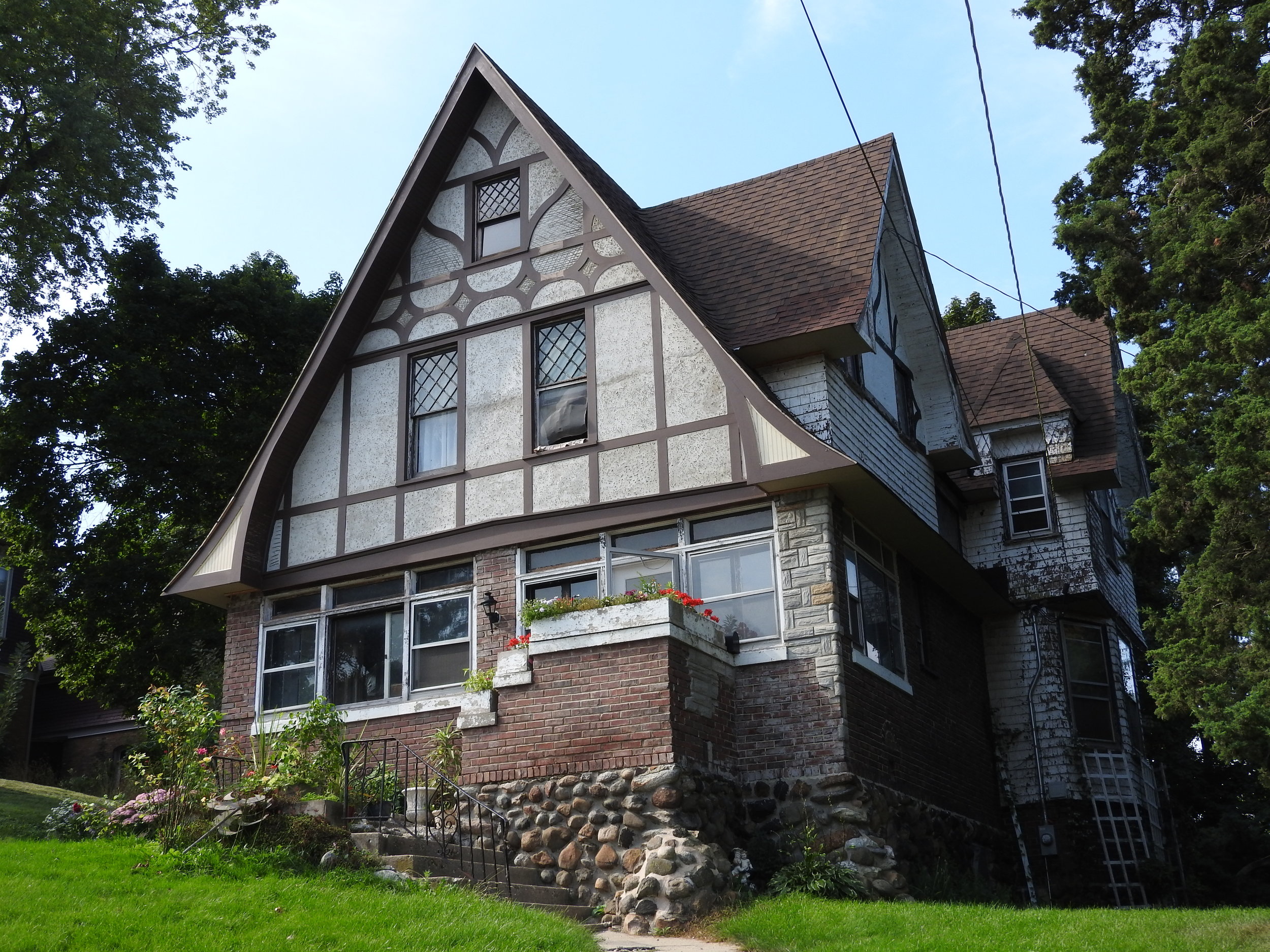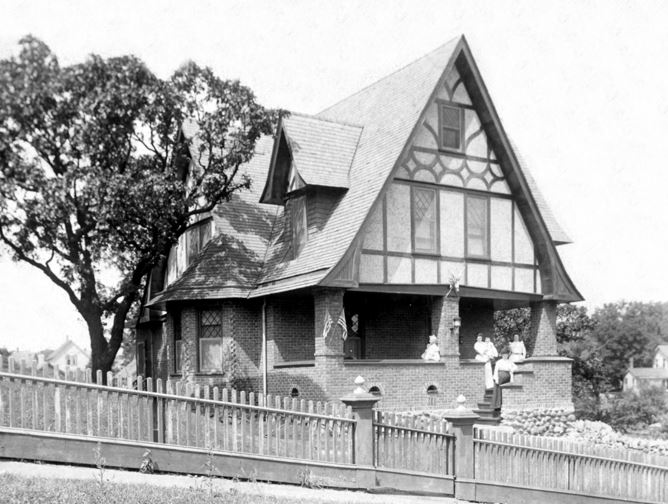16 N. JACKSON STREET
HISTORIC SIGNIFICANCE
In 1902, Judge John W. Ranstead had 16 N. Jackson Street built for his daughter, Janet, and her husband, Charles Lehmann for $5,000. The home was constructed next door to the Ranstead estate located at 4 N. Jackson Street. Charles William Lehmann was born in Suffolk County, Massachusetts in 1874 to Charles J. and Gertrude. The family relocated to Elgin in the 1890s. Lehmann soon became a respected lawyer and partnered with his father-in-law locating their firm at 43 DuPage Court.
ARCHITECTURAL SIGNIFICANCE
This home is an excellent example of the Tudor Revival Style designed by prolific Elgin architect and builder, William Wright Abell. Abell was hired as a draftsman for the Elgin National Watch Company working there for 18 years. After which, he opened his own private practice in 1893 in one of the country’s economic booms.
16 N. Jackson identifies with the Tudor Revival Style as it includes features such as its steeply pitched, front gabled roof, tall, narrow multi-pane double-hung windows, a massive chimney located at its north façade, and most notably, its decorative, non-structural, half-timbering found throughout the exterior. The Tudor Revival style loosely draws its inspiration from late Medieval English homes. The earliest examples of this style in the United States date from the 1890s but did not become popular until the 1920s.
Sources: Gifford Park Association; Audio: TextAloud



